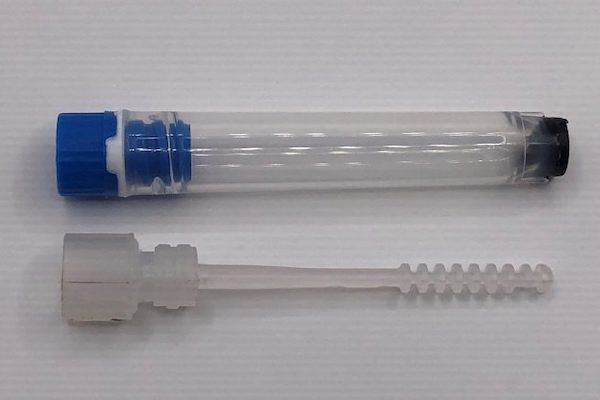Assays Automation Clinical Automation / CLIA Clinical Diagnostics COVID19 Diagnostics - Clinical / Pre-Clinical Plasticware Sample Management Sample Prep
RHINOstic Automated Nasal Swab 
Rhinostics Inc.
Booth: 1430
Patent-pending RHINOstic Automated Nasal Swabs are an integral part of an easily scalable automated swab processing workflow to minimize costs, labor allocations, and disruptions – even during times of surging sample demand.
This all-in-one nasal and buccal swab collection device integrates a unique, polypropylene-based swab with an automatable cap. Automated processing is enabled through use of an automated decapper and automated liquid handler. We chose to partner first with Hamilton Company, as the global automation leader, to facilitate these automated workflows and provide walkaway workflow efficiency with reliable, robust assay performance. Users may now rapidly accession, decap, and recap up to 96 RHINOstic devices per run.
An automated RHINOstic workflow offers a number of benefits, including: (1) Reduce labor requirements by 80+% – this translates into labor costs of less than $0.50 per sample; (2) Process significantly more samples with the same footprint and personnel as manual methods; (3) Increase swab sample processing throughput up to 10x compared to manual methods; (4) Instant scalability and flexibility during surging demands – without having to increase labor costs; (5) Increase cost savings – no need for expenses related to viral transport media, extraction or concentration steps; (6) Increase processing consistency for a reduction in costly and time-consuming retesting; (7) Achieve a significant return on investment; with breakeven on capital investments in 20 days or less
Using the RHINOstic automated swab processing workflow, labs of any size can spend fewer dollars per test, improve processing efficiency, and get results out the door faster than ever before. Ask about our ROI calculator so you can see your lab’s personalized savings first-hand.
The disposable RHINOstic is registered as a Class I exempt medical device with the U.S. FDA and may be used for clinical collection upon CLIA validation.
